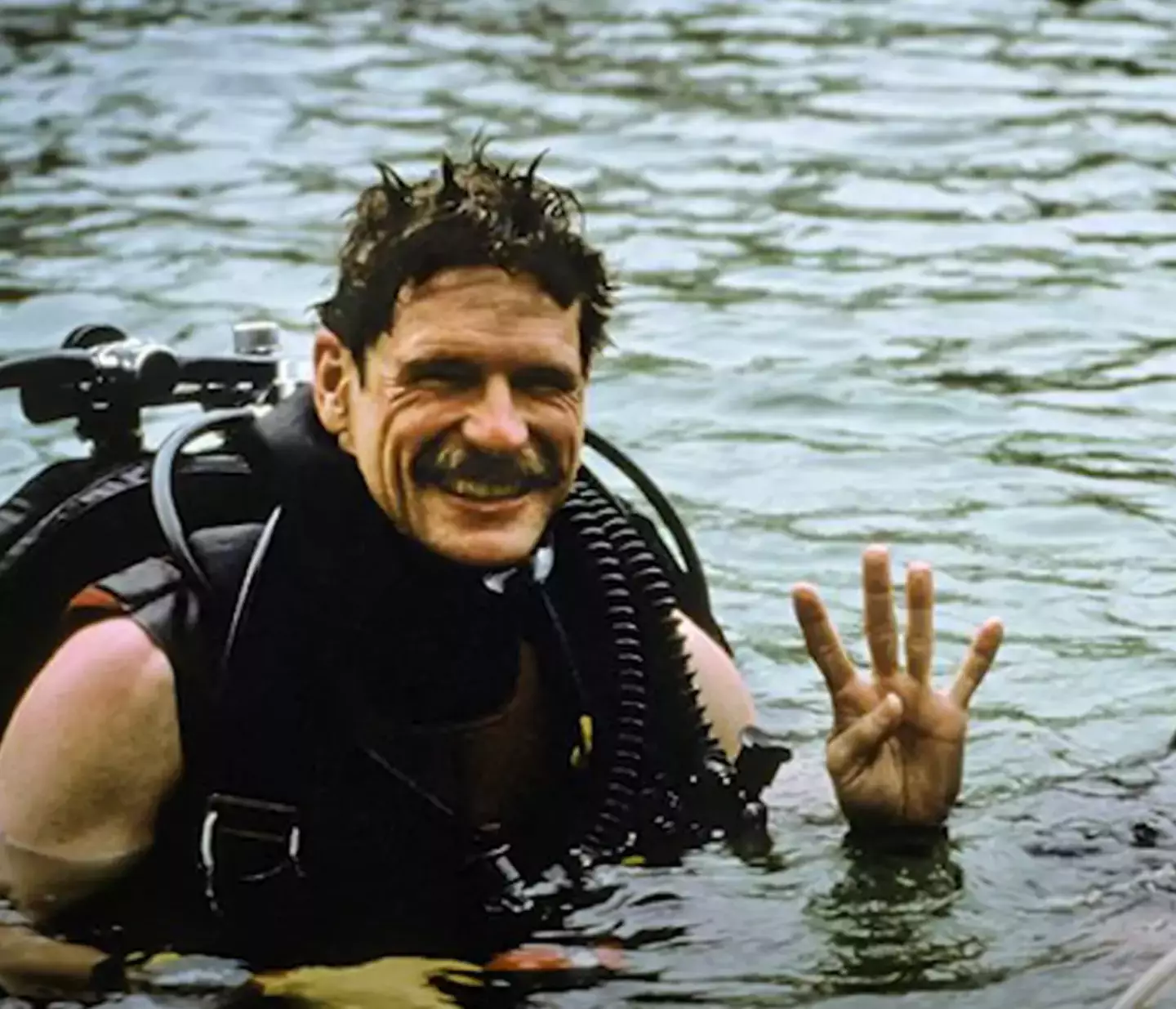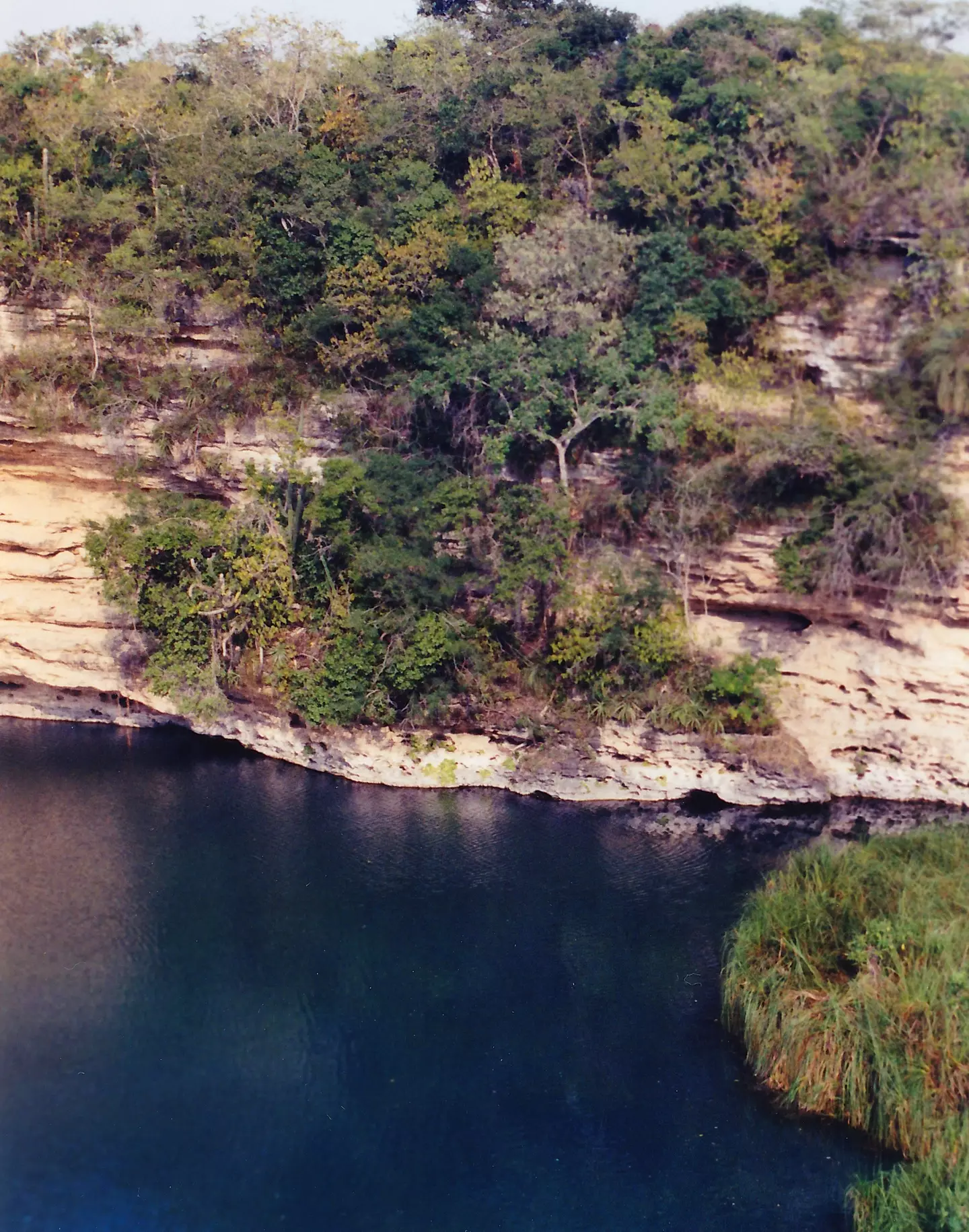When his friends found him they understood what he’d done with his last moments of life
A diver who suffered one of the most brutal final deaths ever is believed to have used his final moments of life to make sure that his loss didn’t result in anybody else’s death.
US diver Sheck Exley became a pioneer in the art of cave diving, a daring but extremely dangerous occupation which many divers attempt, and not all come back from.
Exley developed many of the safety techniques and procedures which have likely resulted in saving some lives of divers who ended up in trouble and followed his instructions to survive.

Sheck Exley made sure his body could be recovered without putting anyone else’s life in danger. (Youtube/True Disaster)
He popularised the use of something called the ‘octopus’, a second diving regulator that can be used in case the first one fails or if a diving buddy runs out of their own air supply and needs to borrow some.
The first to complete 1,000 cave dives, Exley would end up racking up more than 4,000 cave dives in total before he died trying to break a depth record in the world’s deepest sinkhole.
Exley is the first, and to this date one of only a few people in the world, who managed to dive below 800ft in technical scuba diving, but in 1994, he was attempting to make it below 1,000ft in Mexico’s Zacatón sinkhole.
He dived down into Zacatón with a man named Jim Bowden, and it wasn’t the first time the men had explored the place.
On previous dives, Exley had made it 721ft down, and Bowden had reached a depth of 504ft, then set themselves the task of trying to reach the bottom of the Zacatón.
On 6 April, 1994, at about 9:50am local time, Exley and Bowden wished each other good luck and dove down into the sinkhole – but only one of them would emerge alive again.
According to Tech Diving Mag, after passing a depth of 800ft, Bowden said he could see Sheck’s light in the distance.
That was the last time he was seen.
Once the diver reached 900ft, he realised that his air supply was far lower than expected.
The deeper you dive, the more air you use, and Bowden had to stop his descent at 925ft and return to the surface. He could see Sheck’s line, but no sign of the man himself.

The Zacatón in Mexico, where Exley dived trying to make it below 1,000ft. (William L. Farr – Own work, CC BY-SA 4.0)
Support divers went to help Bowden with his long decompression and went down to check for bubbles, a sign that Sheck was still breathing, but found nothing.
The diver had died hundreds of feet below the surface of the water, with his dive computer showing that he reached a depth of 906ft and there was still air in one of his tanks.
Exley’s cause of death was never conclusively determined, with some suggesting that it had been High Pressure Nervous Syndrome (HPNS), a condition which affects divers below depths of around 500ft.
His body was at such a depth that it would have been lethally dangerous to try and recover it, but when crews hoisted up his equipment, the diver came with it.
It was discovered that in his last moments, he’d tied his tanks into the descent line, so when the crew hauled up the line, they also brought his body back up with it.
By doing this, Exley had ensured his body could be recovered while saving anyone else from the danger that he himself had succumbed to.
Anyone who had tried to go down and get him would have likely died themselves.
Featured Image Credit: Youtube/True Disaster


